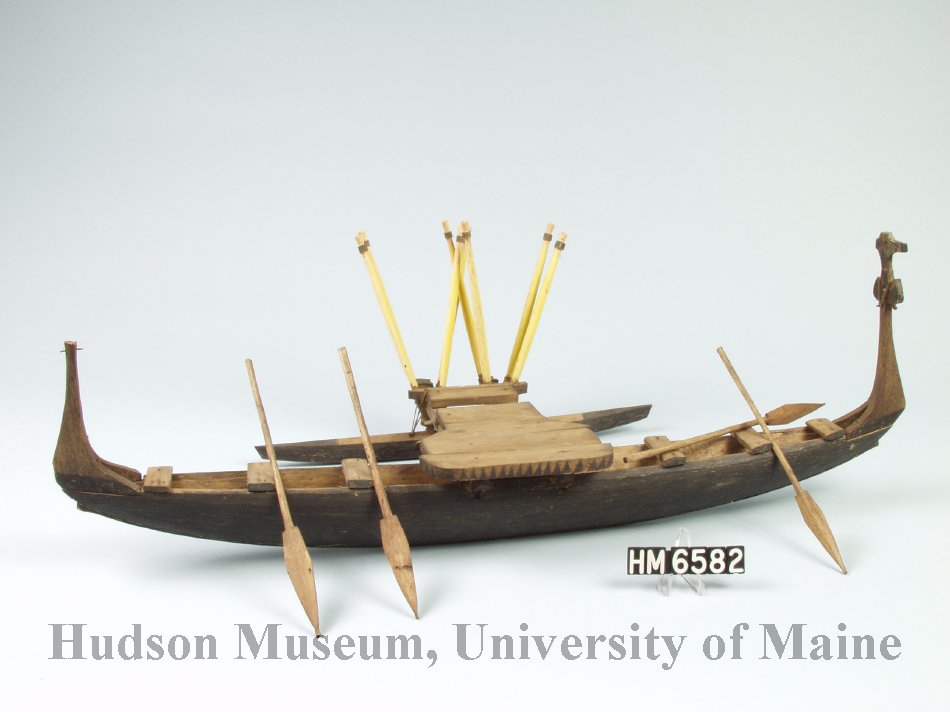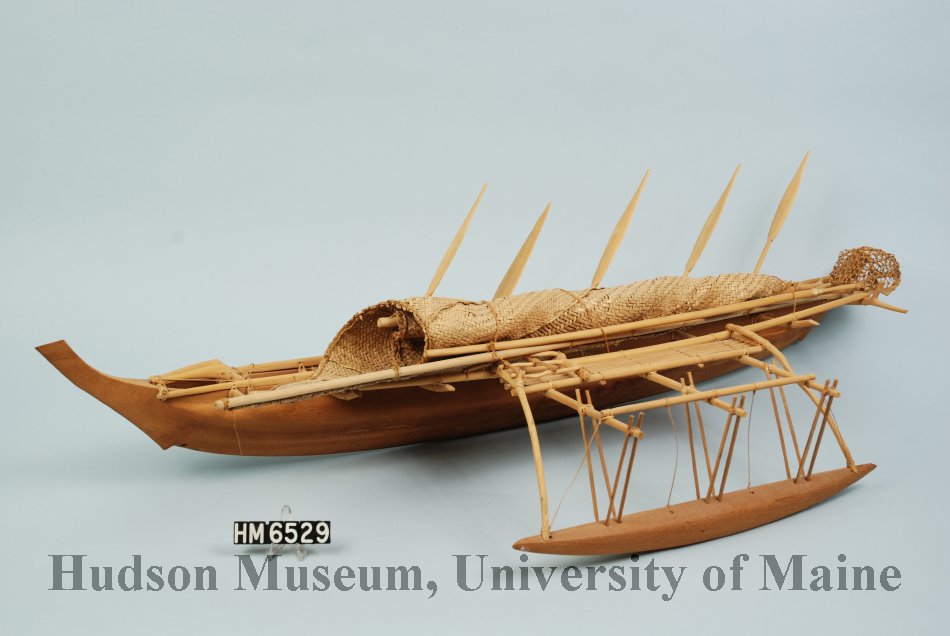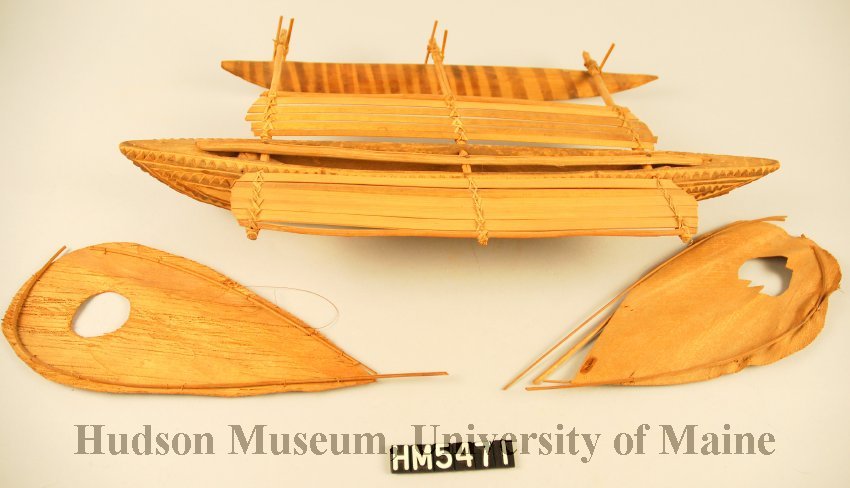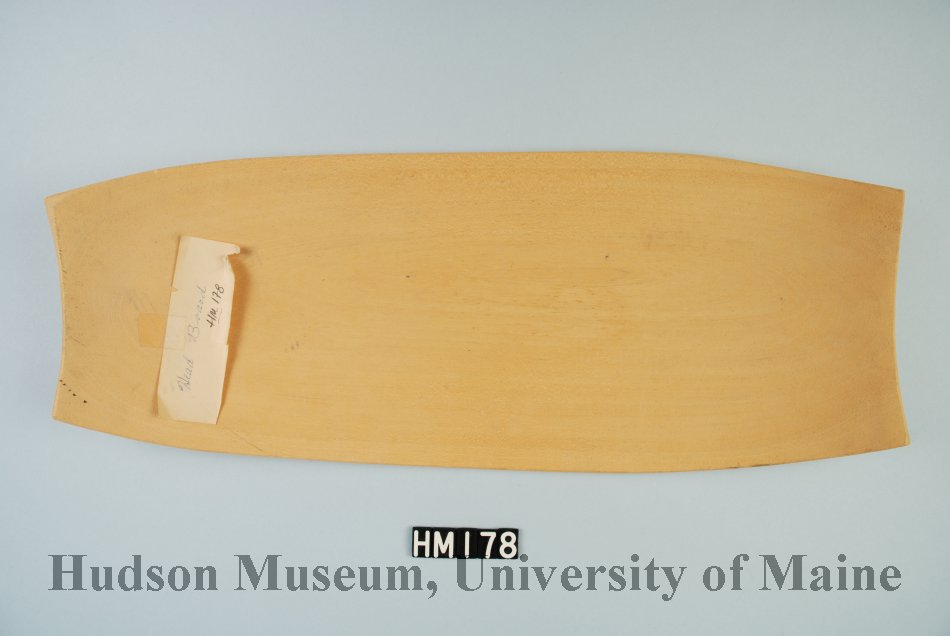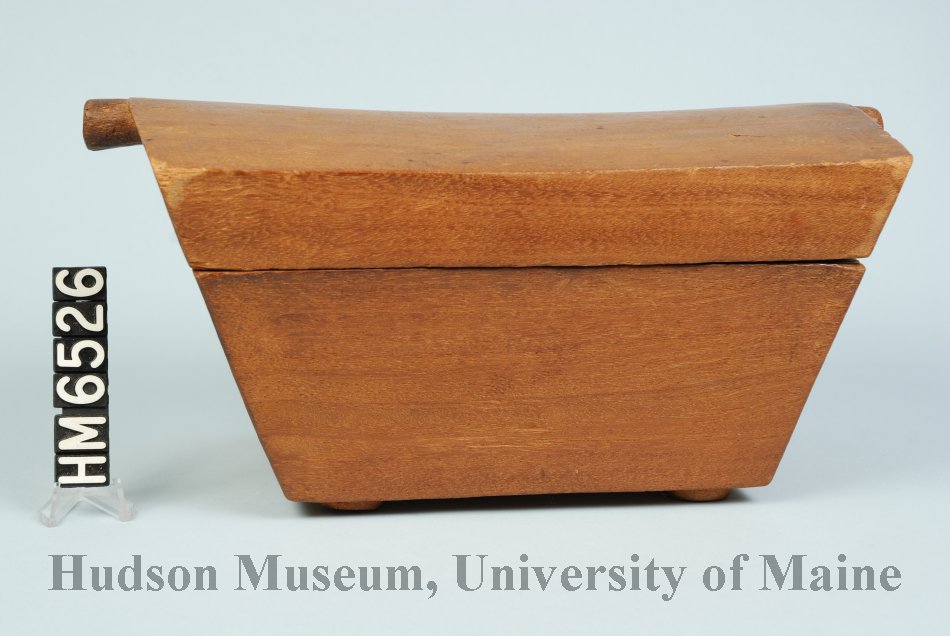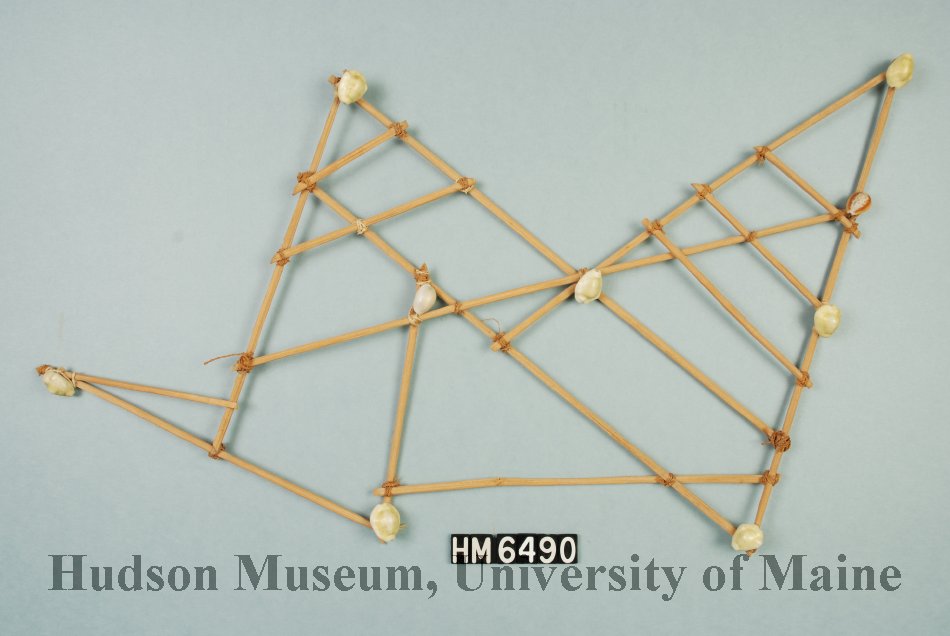Outrigger Canoe Models
Richard Emerick commissioned traditional sailing outrigger canoe models for the islands in the Pohnpei District: Kapingamarangi, Nukuoro, Majuro, Kosrae, and Chuuk. All are designed with a single outrigger and are called wa. Their hulls are generally made from hollowed out bread fruit tree trunks and sails were made from woven pandanus leaves. Propelled by both paddles and sails, these vessels traveled hundreds and even thousands of miles on trading voyages, drawing on navigation charts made from sticks and shells. These charts mark ocean swell patterns and the ways that these patterns were disrupted by islands.
Navigation Chart
c. 1950
Majuro, Marshall Islands
Emerick Collection
Stick charts served as instructional aids for preserving navigational knowledge. They were not taken on voyages, but memorized. The charts’ sticks and shells depict wave and current patterns and how islands interrupted this patterns, allowing sailors to determine the position of islands.

